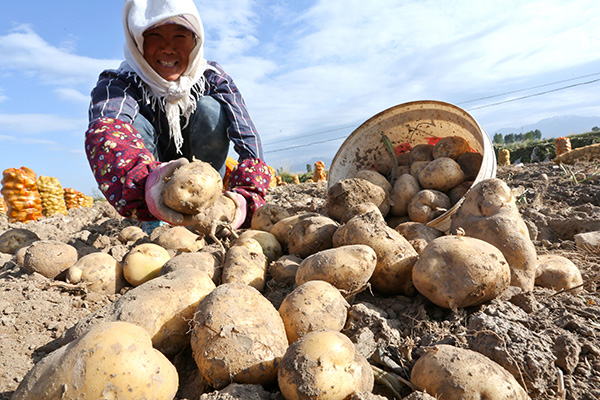China leaving no stone unturned to bid adieu to poverty

China's Ministry of Finance announced earlier this week that the central government had already allocated part of the 2020 poverty alleviation funding to regional governments. The amount distributed so far is around 113.6 billion yuan (approximately $16.2 billion), out of which 14.4 billion yuan will be spent exclusively on impoverished regions such as Tibet, Xinjiang, parts of Sichuan, Yunnan, and Gansu provinces.
This fight against poverty isn't new in China, having started in 1949 after the founding of the People's Republic of China. It gained further momentum after 1978 when the country carried out the policy of reform and opening-up of the economy.
Over the past four decades, China has made significant strides in alleviating poverty. In 1990, the country had almost 750 million impoverished people, more than 60% of its population, according to World Bank data.
However, astonishingly, by the end of 2018, this figure had been drastically reduced to just 16.6 million, according to the National Bureau of Statistics (NBS).
In 2017, a statement published following the Central Economic Work Conference named controlling financial risks, poverty reduction, and pollution control as three tough battles for the ensuing three years.
The statement highlighted the necessity of meeting these challenges to ensure the country could meet its target of becoming a moderately prosperous society in all respects.
It was also in line with the country's ambition of eradicating extreme poverty by 2020, a pledge that China took in October 2015. In fact, between 2013 and 2018, the country raised more than 80 million people out of poverty.
Apart from this, China is also committed to fulfilling the United Nations' Sustainable Development Goal of achieving zero poverty by 2030. Already, the UNDP report published in 2015 highlighted the crucial role China had played in attaining the U.N. millennium development goals (MDGs) established in 2000.
The nation accomplished this result by successfully lifting more than 470 million people out of extreme poverty between 1990 and 2005.
Evidently, China is leaving no stone unturned to bid adieu to extreme poverty. The country in the past few years has deployed considerable public as well as private resources to meet the challenge on many fronts. These measures include: expanding industrialization in rural areas, generating new job opportunities, relocating residents from impoverished regions to more productive areas, providing compulsory education, granting financial assistance, and widening the scope of the digital economy to cover the most impoverished regions of the country.
Technicians check the condition of photovoltaic (PV) equipment installed on roofs of residential houses in a village of Feixiang District of Handan, north China's Hebei province, Nov. 16, 2019. In recent years, local government of Feixiang District has promoted PV poverty relief projects to help villagers increase their income with the earning from electricity generated by PV power panels installed on roofs of their houses. [Photo/Xinhua]
Reportedly, industrial expansion so far has proved to be the most significant instrument. More than 100,000 industrial bases covering almost 92% of impoverished households have been established in severely deficient regions, ensuring nearly 70% of the population escaped from poverty.
Besides this, skill development programs have also played a critical role in helping almost 300,000 people to move above the poverty line. Additionally, three-year micro-credit loans without any collateral security are being provided to encourage entrepreneurship in the poor regions. So far, a total sum of more than 580 billion yuan in the form of micro-credit loans has been disbursed to impoverished households.
The NBS, in its report entitled "Income of Rural Residents in Poor Areas in the First Three Quarters of 2019," has revealed that the per-capita disposable income of residents in rural impoverished regions reached 7,940 yuan, a 10.5% increase compared with the same period last year.
China's reforms and opening-up had pulled millions of people out of their impoverished state, which has benefited not just Chinese people but also residents of other nations.
Building on past experiences and unwavering determination of both government and private stakeholders, China will surely be successful in raising the remaining 16.6 million people out of poverty by 2020.
Also, the willingness of the country to share its experiences with the international community will offer opportunities for other developing nations to learn and uplift their people out of poverty.